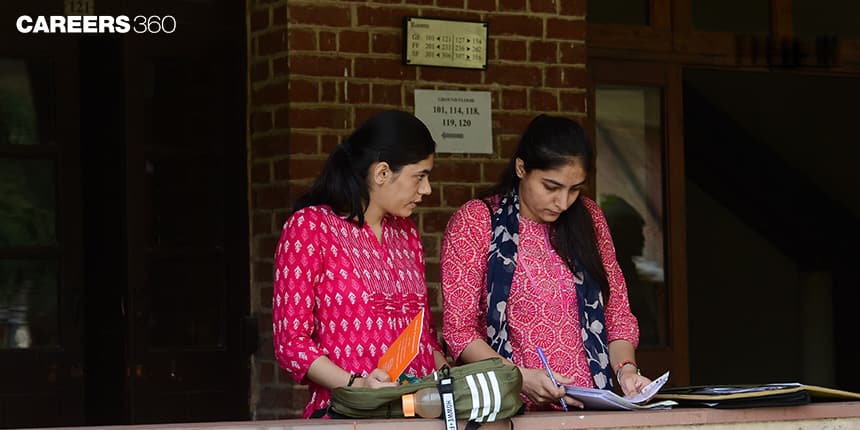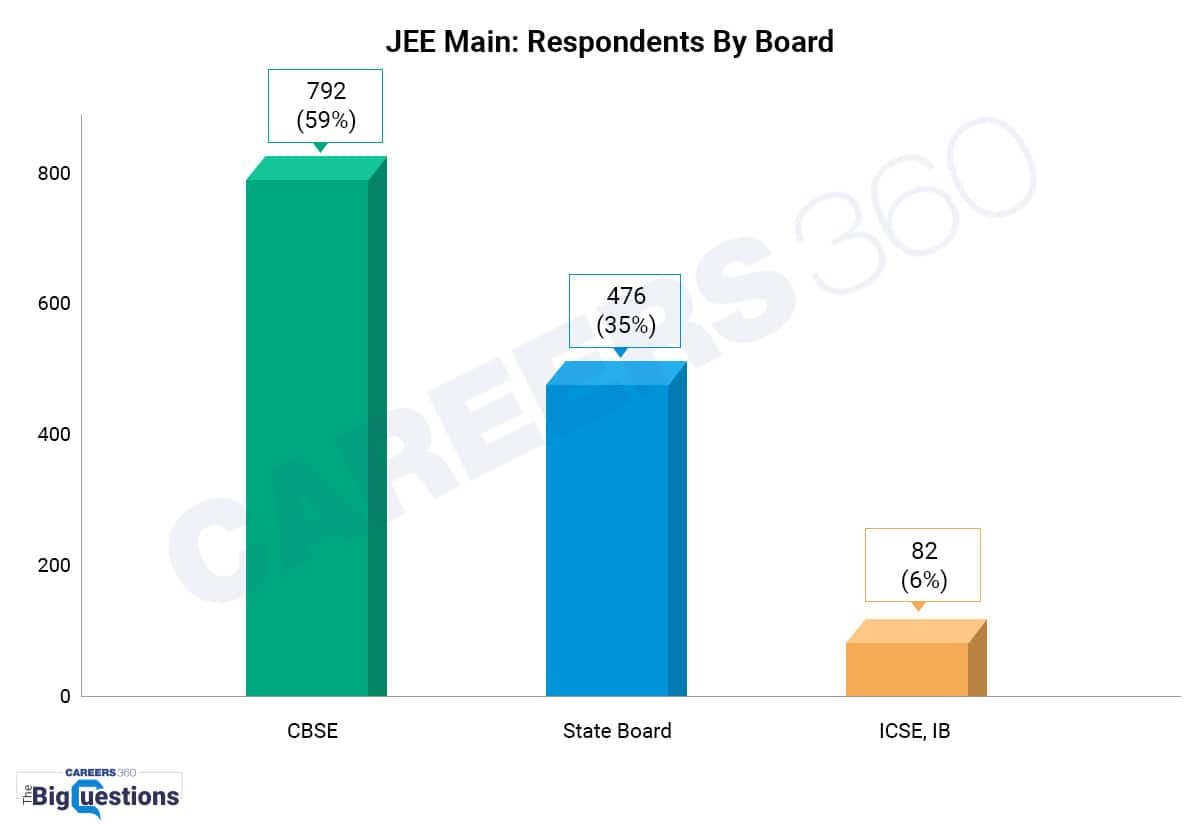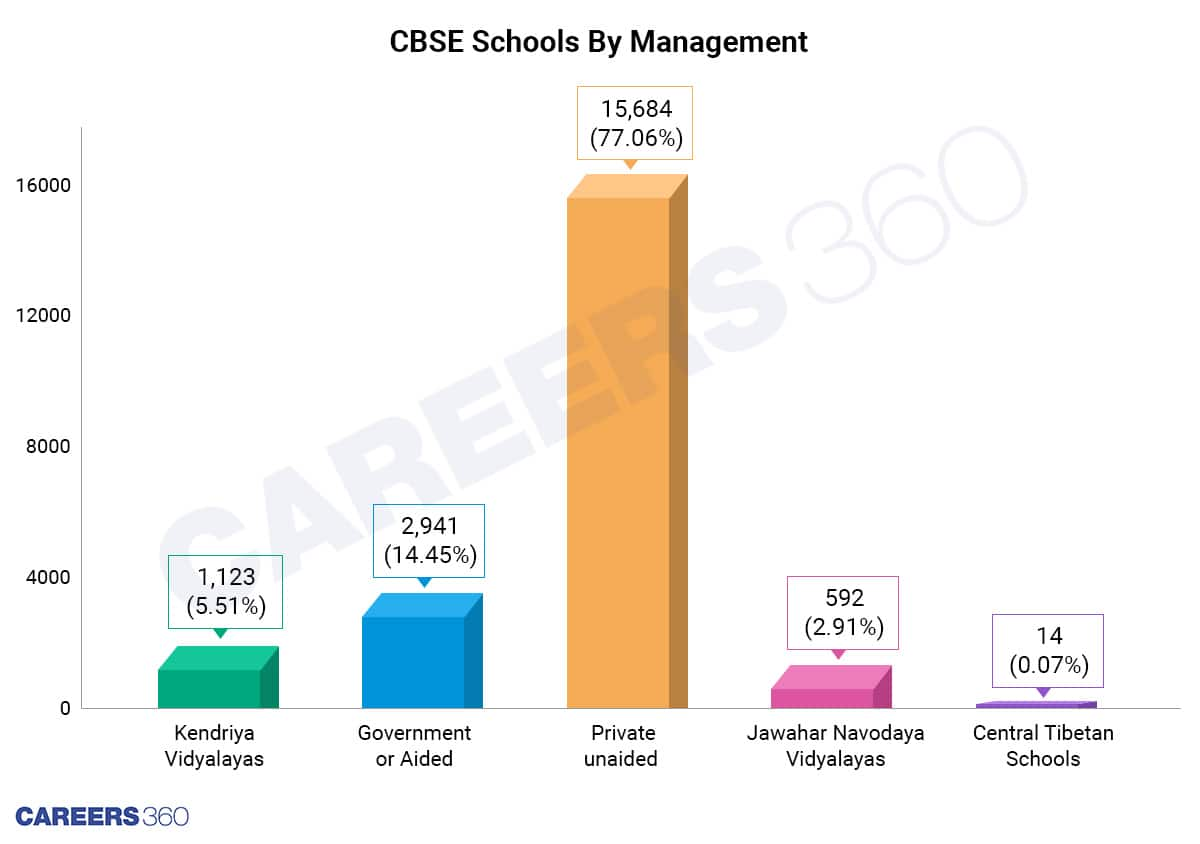Amity University-Noida B.Tech Admissions 2026
Among top 100 Universities Globally in the Times Higher Education (THE) Interdisciplinary Science Rankings 2026
Students from schools affiliated to the Central Board of Secondary Education (CBSE) dominate in the admission tests for Engineering – Joint Entrance Examination (JEE) Main and JEE Advanced.

While CBSE accounts for just 11 percent of the total number of schools offering senior-secondary-level education – Classes 11 and 12 – its representation among students successful in the JEE Main and achieving high scores is a disproportionately high 59 percent.
A recent survey conducted by Careers360 with students studying in India’s premier institutions to understand which boards they studied under and how they prepared, showed that CBSE students enjoy a giant advantage over students who completed their senior secondary education – Classes 11 and 12 – in schools affiliated to state boards. The same survey shows that state board schools, which are 83% of all senior secondary schools, accounted for just 35% of the students successful in JEE Main and JEE Advanced, the second-tier exam for admission to the Indian Institutes of Technology (IIT).
The survey findings corroborate official data on student backgrounds in the JEE Main and JEE Advanced, last disclosed after the exams in 2018. The report on the exam, prepared by the JEE Advanced organising institution for that year, IIT Kanpur, also showed a disproportionately-high representation of CBSE students - 55.2 percent – among those successful in JEE Advanced 2018. The same report shows that the second runner-up that year was the Telangana Intermediate Board (TSBIE), with just 10.9 percent students.
Since the National Testing Agency (NTA) started conducting the JEE Main in 2019, no data on background, school board and other socio-economic factors that influence performance in the exam have been publicly disclosed.
Conducted over February-March, Careers360’s The Big Questions survey tried to understand which boards students who have written the JEE Main and JEE Advanced examinations come from and how they prepare. The respondents were top rankers of the two exams who had a fair chance of getting into IITs, National Institutes of Technology (NIT), Indian Institutes of Information Technology (IIITs) and other government-funded institutions (GFTIs).
In all, 1,526 students responded. Of them, 666 students are currently studying in an IITs, 378 in NITs, and 142 in IIITs. As many as 1,186 of the 1,526 students surveyed – 78% -- achieved their objective of studying in one of the top most institutions of the country. Considering their scores, the rest may have joined GFTIs or other elite institutions. Also, 1,133 of the 1,526 students – 84% -- joined the institutions in 2020 and 2021 and are pursuing BTech degrees in different branches.
Of these 1,526 students, 1,350 also responded to the question on the school board they belonged to. The result, consistent with the 2018 official data, shows how critical the choice of school board is for cracking the JEE and how the CBSE students enjoy an undeniable edge. Given below is how the respondents were distributed across boards.
 Board-wise students who sat for JEE
Board-wise students who sat for JEE
According to the UDISE Plus, India’s main public database on schooling, the country has a total of 15,09,136 schools. However, the number of senior secondary schools – with Classes 11 and 12 – is 1,44,088. The vast majority of senior secondary schools are affliated to state boards. Their distribution is given below.

Classes 11, 12: School Distribution By Board
Rest of the schools are unaffiliated.
While the UDISE data does not show the distribution of enrolled students by secondary board of examination, data released by the boards at the time of conducting the Class 12 exams shows that CBSE students form a small fraction the total student population at that level, in the country. In 2021, CBSE had 13.04 lakh students, across states, writing the Class 12 exams. Tamil Nadu (TN) board alone had 8.16 lakh; Maharashtra HSC board had 13.19 lakh; Bihar board (BSEB) had 13.4 lakh and Uttar Pradesh (UP Board or UPMSP), India’s largest school board, had a staggering 29.94 lakh registering or writing the exam. These are just four states.
With schooling being mostly state-funded and governed, it is natural that most students should attend state schools. However, in a national-level entrance exam system that is truly equitable and fair, this distribution would also reflect in the students qualifying the exams. However, that is not the case. National exams, clearly and indisputably, favour CBSE students.
Given below are the boards that did best and worst in the 2018 round of JEE Advanced.
JEE Advanced 2018: Best And Worst
| Board | Registered For JEE Advanced | % Registered Out Of Total | Admitted In IITs | Presence In IITs (In %) |
| Best 5 | ||||
| Andhra Pradesh (AP Inter or BIE AP) | 14,017 | 8.50% | 998 | 8.30% |
| CBSE | 71,403 | 43.30% | 6,600 | 55.20% |
| Maharashtra (HSC Board) | 12,983 | 7.90% | 853 | 7.10% |
| Rajasthan (RBSE) | 8,981 | 5.40% | 745 | 6.20% |
| Telangana (TS Inter or TSBIE) | 14,551 | 8.80% | 1298 | 10.90% |
| Worst 5 | ||||
| Bihar (BSEB) | 5,424 | 3.30% | 208 | 1.70% |
| Tamil Nadu (TN Board) | 2,870 | 1.70% | 27 | 0.20% |
| Madhya Pradesh (MPBSE) | 3,823 | 23% | 192 | 1.60% |
| Karnataka (PUE Karnataka) | 5,361 | 3.30% | 96 | 0.80% |
| Uttar Pradesh (UP Board or UPMSP) | 3,787 | 2% | 115 | 1% |
| Total | 1,64,822 | 11,961 |
Hidden within this bias is another one. While the CBSE is a public board in that that it is an autonomous body directly under the ministry of education, the vast majority of schools affiliated to it are private unaided. In 2018, the same year as the IIT Kanpur report, the total number of CBSE schools grew to 20,354, according to the board’s official website. Of these, over 15,000 were private. Given below is the distribution of CBSE schools by management type.
 Distribution of CBSE schools in 2018 (Source: CBSE Official Website)
Distribution of CBSE schools in 2018 (Source: CBSE Official Website)
The central exams, including the new examinations such as the Common University Entrance Test (CUET) are uniformly all based on the textbooks of the National Council of Educational Research and Training (NCERT), a central advisory body on curriculum and textbook design. While some state boards have been pushed to adopt NCERT textbooks directly or modified versions of them, CBSE textbooks are all NCERT books. An exam syllabus “based on NCERT” is essentially code for CBSE syllabus.
There is also significant overlap between students writing the JEE and junior level scholarship competitions and Olympiads in Classes 9 and 10. The syllabus for these is also based on the NCERT textbooks, and therefore, would be most familiar to CBSE students. This, in turn, means CBSE students aiming to write the JEE get early exposure to the textbooks and syllabus.
A large number of government schools affiliated to the state boards may teach in the regional languages and that may make preparation further difficult. Although the NTA started conducting JEE Main in 13 languages in 2021, the number of students writing in languages other than English is very small.
The choice of the board is a choice made by the student and their parents. However, if your primary objective is to crack a central examination after Class 12, data suggests that the CBSE may be a better choice.
On Question asked by student community
The marks needed for a 99+ percentile in the JEE Main January attempt depend on the difficulty of the paper and the total number of candidates. Generally, you need roughly *180–200* marks out of 300 to hit the 99+ percentile. The exact cutoff varies each session, so checking the official NTA percentile score calculator or previous year cutoffs gives a more precise idea.
Hello aspirant
JEE Main accepts NIOS, so you can appear if you meet the basic eligibility.
BITS does not accept marks from two different boards, so this option won’t work for BITS.
VIT and SRM generally accept NIOS, but having two separate mark sheets can be an issue. You should check their official eligibility rules before applying.
Thankyou I hope this help
Hi
The NCHM JEE 2026 registration is expected to start from the second or third week of December 2025. The official notification for the registration will be released in mid-December 2025. The last date of application may be in February or March, and the correction window will be open in the third week of March 2026. The exam date will take place in the second week of April 2026.
Thank you.
Hello,
Here are some Government colleges that generally do not require 75% CBSE board criteria for admission through JEE mains based or university counselling.
I hope it will help you. Kindly check the latest eligibility rules for the specific year.
Thank you.
Hello
If you want to get admission in IIT Delhi, then you will score well in JEE Advanced. Only the JEE Mains score is not sufficient to get admission in the IIT Delhi. You need to score 250+ marks for the general category in CSE. For the reservation category, you also need to score much higher marks and give your best performance. If you score quite well in JEE Advanced, then you will have a chance to get admission through JOSAA counselling.
Thank you
Among top 100 Universities Globally in the Times Higher Education (THE) Interdisciplinary Science Rankings 2026
Ranked #43 among Engineering colleges in India by NIRF | Highest Package 1.3 CR , 100% Placements
National level exam conducted by VIT University, Vellore | Ranked #16 by NIRF for Engg. | NAAC A++ Accredited
Recognized as Institute of Eminence by Govt. of India | NAAC ‘A++’ Grade | Upto 75% Scholarships
#6 All India Rank- IIRF Impact Ranking 2025 | H-CTC 24 LPA | Merit-Based Scholarships | Best of 2 Scores Advantage
Hands on Mentoring and Code Coaching | Cutting Edge Curriculum with Real World Application